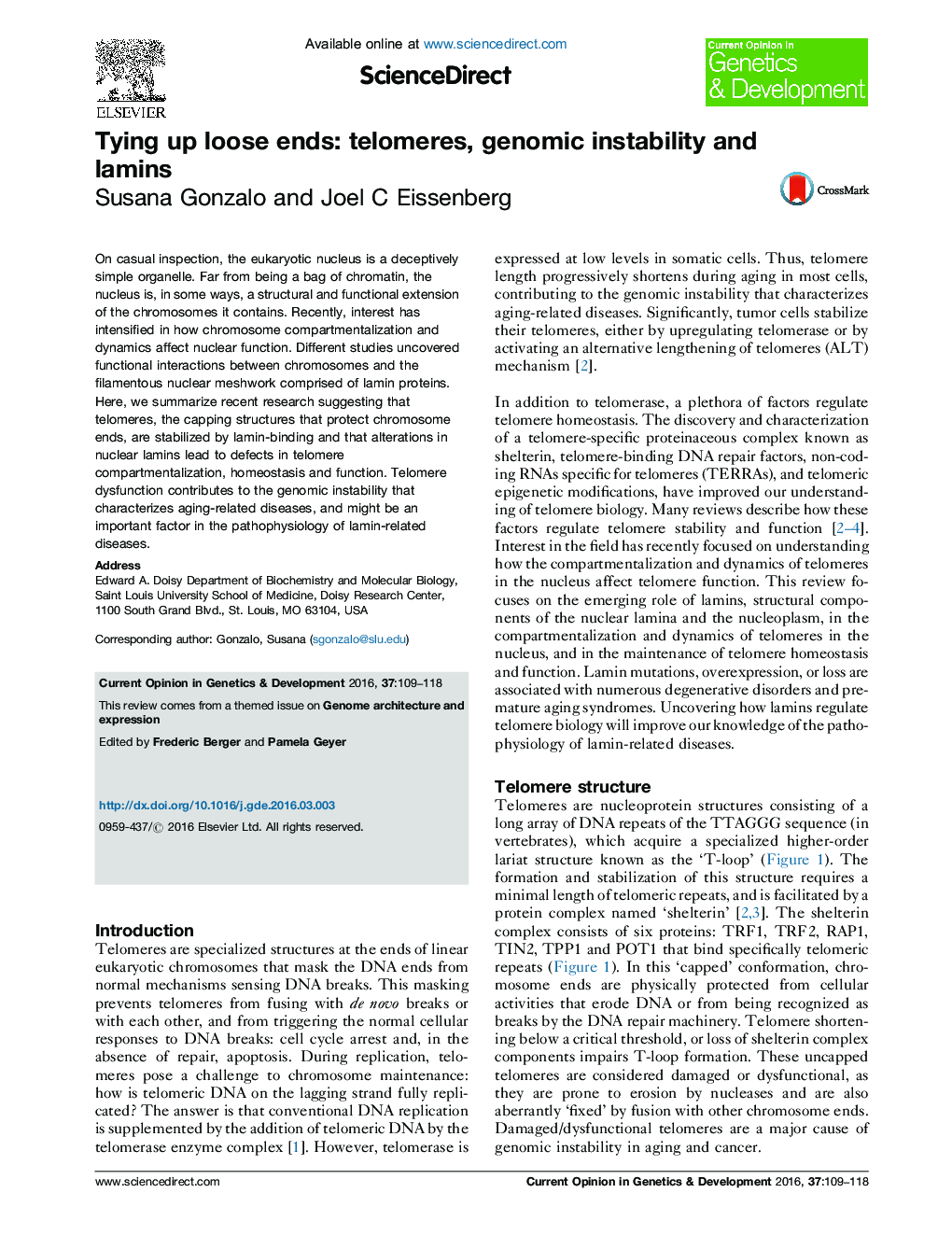| Article ID | Journal | Published Year | Pages | File Type |
|---|---|---|---|---|
| 5893168 | Current Opinion in Genetics & Development | 2016 | 10 Pages |
Abstract
On casual inspection, the eukaryotic nucleus is a deceptively simple organelle. Far from being a bag of chromatin, the nucleus is, in some ways, a structural and functional extension of the chromosomes it contains. Recently, interest has intensified in how chromosome compartmentalization and dynamics affect nuclear function. Different studies uncovered functional interactions between chromosomes and the filamentous nuclear meshwork comprised of lamin proteins. Here, we summarize recent research suggesting that telomeres, the capping structures that protect chromosome ends, are stabilized by lamin-binding and that alterations in nuclear lamins lead to defects in telomere compartmentalization, homeostasis and function. Telomere dysfunction contributes to the genomic instability that characterizes aging-related diseases, and might be an important factor in the pathophysiology of lamin-related diseases.
Related Topics
Life Sciences
Biochemistry, Genetics and Molecular Biology
Developmental Biology
Authors
Susana Gonzalo, Joel C Eissenberg,
